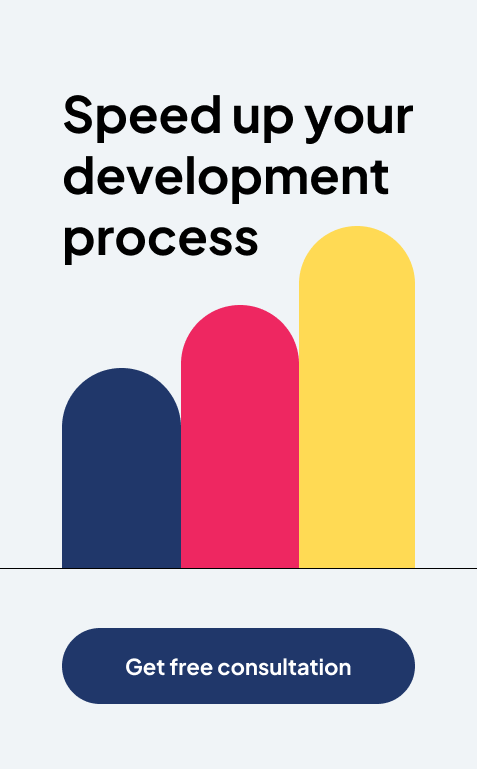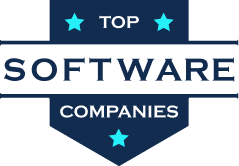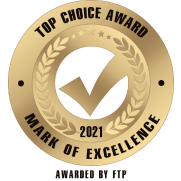How to Choose the Right Tech Stack for Your Next Software Project?

It’s not about using the trendiest tools. It’s about using the right tools for the job.
~ Inspired by Jeff Atwood, co-founder of Stack Overflow
Starting a new software project? You’ve probably heard the term tech stack thrown around. Hence, it is necessary to pick the right one without getting lost in endless options.
Don’t worry, you don’t need to be a developer to figure this out. The selection of tools matters a lot to build an app for your startup, update legacy systems, or plan something brand new.
The right tech stack can save time, reduce costs, and set your project up for long-term success. Whereas, the wrong one can lead to delays, headaches, and wasted money.
So…
- What does a tech stack really mean?
- Why does it matter to your business?
- And how do you pick the one that fits your project goals and team skills?
We’re going to break it all down and ensure that you will have amazing software.
What Is a Tech Stack and Why Does It Matter in 2025?
You’ve probably heard terms like frontend and backend or various stacks.
Well, a tech stack is simply the set of tools and technologies used to build your software. You can think of it like the ingredients in a recipe, and obviously, you need the right mix to create something that works and tastes good too.
There are two main parts:
- Frontend – What users see and interact with (buttons, layouts, mobile screens)
- Backend – What runs behind the scenes (servers, databases, logic)
Some stacks also include:
- Databases – Where your data lives, like MySQL or MongoDB.
- DevOps tools – For testing, deploying, and managing your code
APIs – For connecting with other tools like payment gateways or Google Maps
Why Does the Tech Stack Matter?
Because the tools you choose affect:-
- Speed – How quickly you can build and scale your product
- Budget – Some tools are free, others come with licensing or hosting costs
- Talent – It’s easier to hire developers familiar with popular stacks
- Flexibility – The right stack can grow with your business
So before you jump into development, it’s worth asking:
What are you building? Who is it for? And how long do you want it to last?
Factors to Consider Before Choosing a Tech Stack for Your Project
Wondering how to pick the right tech stack for your software project? Well, several important factors can make or break your decision.

1. Define Project Type and Complexity
What kind of software are you building? The complexity of your project should guide your tech stack choices.
- Simple apps or websites might only need basic tools.
- Enterprise-level software or scalable platforms require more sophisticated and robust stacks.
Ask yourself a couple of questions:
- Is this a one-time project or will it need to scale?
- Will it need to handle a lot of traffic or data?
2. Look for Team Expertise
Do you know it’s crucial to consider the skills of your team or developers? For instance, could go with the coolest and most cutting-edge stack, but if your team doesn’t have experience with it, you’ll run into issues. So, find out:
- Are your developers familiar with certain tools that you are expecting to incorporate?
- Can your team easily learns a new tech stack if needed?
3. Development Speed vs. Long-Term Scalability
The speed at which you build your product matters. Some stacks offer fast prototyping but can be hard to scale later, and vice versa.
Ask yourself:-
- Do you need to launch quickly, or is long-term scalability more important?
- What’s your timeline for product releases?
4. Community and Support
You must need a tech stack that has an active community. A strong developer community means better documentation, more tutorials, and easier access to help when things go wrong.
Research out:-
- How large and active is the community around a specific stack?
- Are there resources and support available to help your team when needed?
5. Budget
Do you know some tech stacks are free and others come with licensing costs? Or they require you to pay for hosting and servers.
- What’s your budget for the project?
- What tools provide the best value without sacrificing quality or performance?
6. Future Proofing
The tech world is constantly changing. It’s worth considering whether a stack is likely to remain relevant or get replaced by something newer and better in a few years.
- Is the technology you’re considering regularly updated and supported?
- Will it still be viable long-term as your product grows?
Choosing the Right Tech Stack for Your Project: Recommendations Based on Use Case
Do you know that every software project is different? That’s why your chosen tech stack should match your project’s needs correctly.
Here’s a quick rundown of what’s best for common types of software projects that you need to know:-
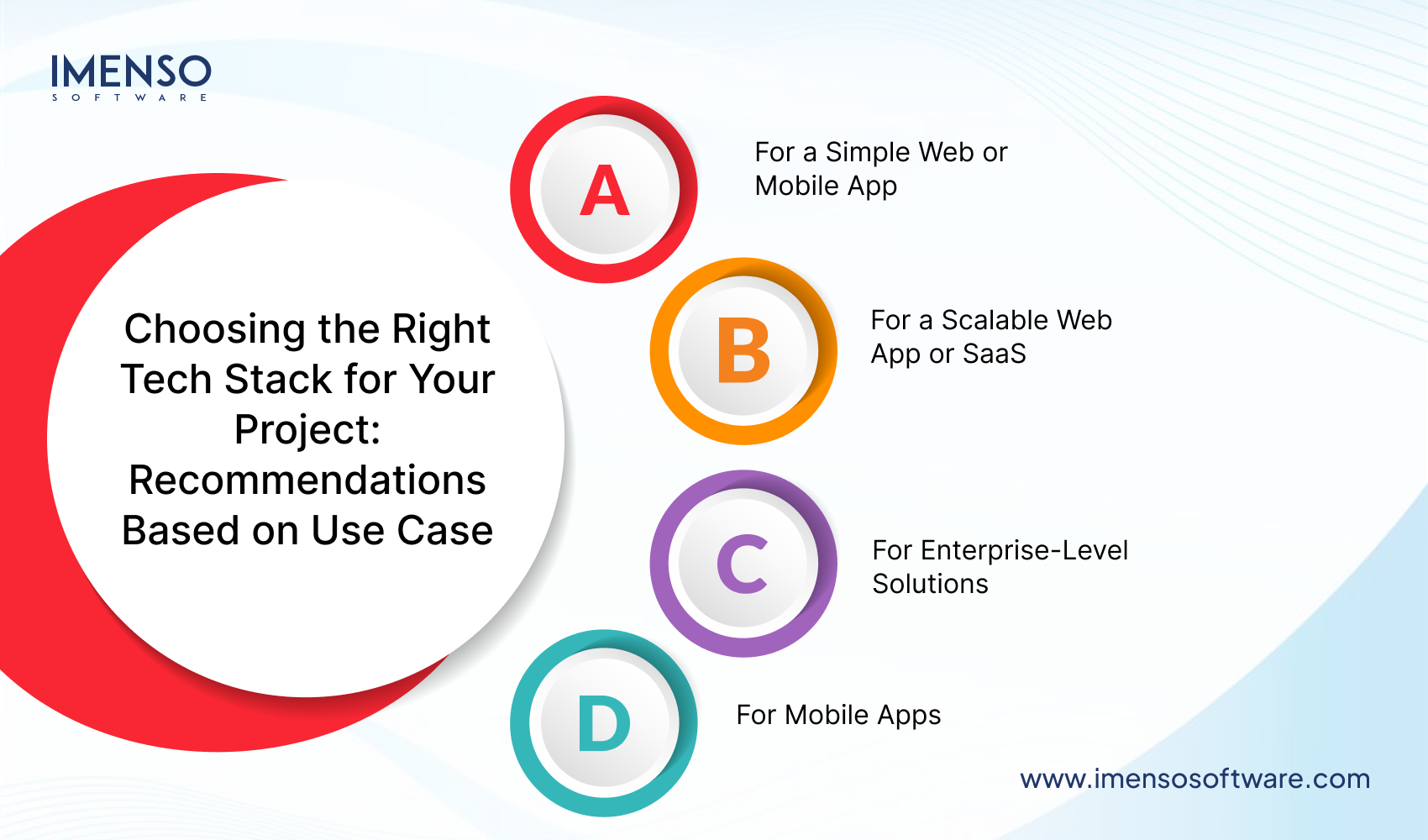
- For a Simple Web or Mobile App
You want something lightweight and easy to work with when you’re building a small app or MVP that needs to launch fast.
Recommended Stacks:
- Frontend: React for web apps or Flutter for mobile apps
- Backend: Node.js or Express.js is great for fast development
- Database: MongoDB NoSQL, flexible
- Deployment: Heroku or Netlify, easy-to-use cloud services
This stack gives you speed, simplicity, and flexibility, all while being popular and well-supported by the development community.
- For a Scalable Web App or SaaS
It’s time to think bigger if you plan to scale quickly and want robust performance. SaaS platforms often want reliable tools, strong security, and the ability to handle large amounts of data or traffic.
Recommended Stacks:
- Frontend: React or Vue.js modern frameworks for fast, interactive UIs
- Backend: Ruby on Rails, Django, or Node.js for efficient server-side code
- Database: PostgreSQL or MySQL relational databases for complex queries
- Deployment: AWS or Google Cloud, cloud services for scaling
- For Enterprise-Level Solutions
Enterprise software needs to be able to handle complex workflows. These systems typically require a more structured approach to development and deployment.
Recommended Stacks:
- Frontend: Angular or React, both offer flexibility for complex UIs.
- Backend: Java or .NET is proven and secure frameworks for enterprise-level projects.
- Database: Oracle or Microsoft SQL Server are enterprise-grade relational databases.
- Deployment: Azure or AWS are cloud platforms with enterprise-level features.
These stacks are known for their reliability and performance. Also, they ensure that your enterprise system can handle the needs of large teams and customers.
- For Mobile Apps
Planning to build a mobile app and want to target both iOS and Android users without doubling the workload? A cross-platform solution will hlep you in this.
Recommended Stacks:
- Frontend: Flutter or React Native.
- Backend: Firebase a real-time database and authentication.
- Database: SQLite or Realm are local storage solutions.
These stacks help you build such apps quickly and efficiently.
Choosing the Right Stack for Your Team’s Skills
Do you know it is important to consider your team’s existing skills? If you have developers who are already familiar with certain technologies can speed up the development process.
Ask yourself:
- What languages is my team already familiar with?
- How easily can my team adapt to a new tech stack?
- Do I need to hire new developers to fill in the gaps in your projects?
Choosing the right tech stack isn’t about picking the most popular tools, it’s about picking the tools that fit your project.
How to Evaluate Your Options Based on Your Project Requirements?
Have you defined your project requirements? You will have to break it down and understand ways to make an informed decision that aligns with your immediate goals and long-term vision.
- Consider the Core Functionality of Your Product
What’s the main feature of your software project? What does it need to do, and how complex is that feature?
- Is your product focused on data processing? Find tools that handle big data like Apache Spark or Hadoop for heavy lifting.
- Is your product heavily interactive? Choose tech like React or Vue.js that provides rich user interfaces and responsiveness.
- Is your software built around real-time data? Consider a stack with capabilities that complement those requirements.
- Scalability and Growth
As your company or user base grows, your tech stack will need to scale with it. Ask yourself:
- How many users do I expect in the first year? In 3-5 years?
- How much data will the software need to process as it grows?
- Do I need a multi-region deployment?
Choose technologies that can scale easily with your project needs.
- Budget Considerations
Do you agree that choosing the right tech stack also depends on the budget you have allocated for your project?
Consider:
- Licensing costs: Do you need to pay for licenses e.g., Oracle or SQL Server?
- Hosting costs: Will your stack require expensive cloud hosting e.g., AWS, Google Cloud?
- Ongoing maintenance: How much will it cost to maintain and update your tech stack?
You want to ensure that the tech stack you choose won’t just fit your initial budget but also stay within your financial capacity as your product evolves.
- Time to Market
Are you working on a tight timeline and need to get your software to market quickly? You’ll need tools that allow for rapid development, so consider:
- MVP (Minimum Viable Product): If your goal is to launch fast, opt for tools that let you build quickly without reinventing the wheel, e.g., Firebase, Ruby on Rails.
- Custom development: If your project requires unique features & more customization may be necessary.
If you need to build and deploy rapidly without heavy code dependencies, use OutSystems or Bubble.
- Integration Needs
How easily can you stack can integrate with existing systems or third-party services? For example:
- Does your software need to pull data from an existing system?
- Do you require real-time payments, email, or authentication integrations?
Ensure that your tech stack supports easy integration to offer the fewest development hours you’ll need to invest.
Aligning Your Tech Stack with Long-Term Goals
Remember, your tech stack is a foundation that will affect not just your launch, but your growth. It should align with both your immediate needs and your long-term vision. Ask yourself:
- Where do I want my business to be in 3-5 years?
- What kind of growth do I expect?
If you choose a tech stack that supports future expansion, you won’t have to completely overhaul your architecture later.
Quick Tips to Handle Your Team When Choosing and Using a Tech Stack
Are you ready to bring your team on board to run things smoothly? Here are a few quick tips on how to manage your team and make the most out of your tech choices:-
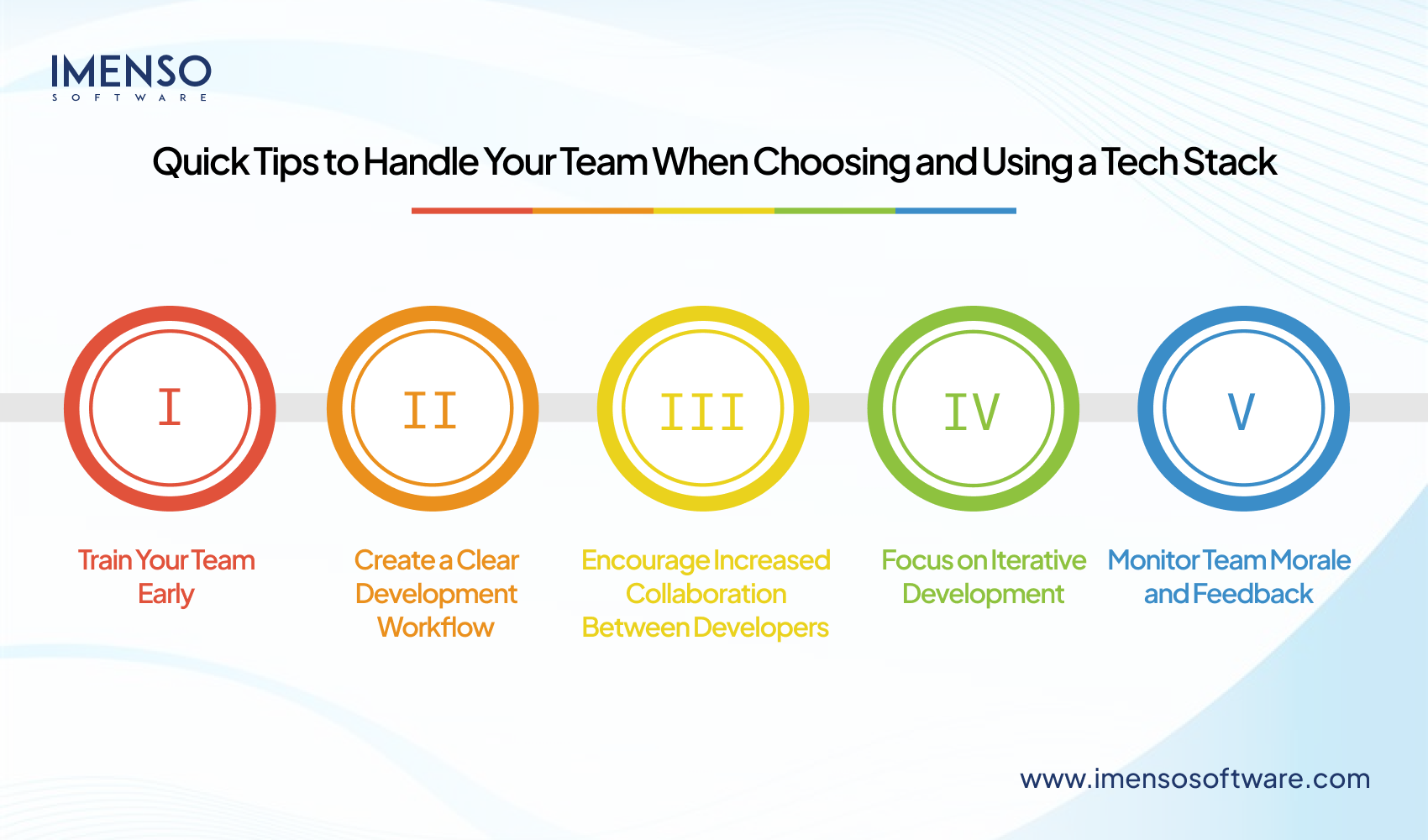
- Train Your Team Early
Don’t wait until the project is in full swing to provide training.
- Offer workshops and online resources that focus on the specific technologies you’ve chosen.
- Encourage self-learning through various means such as tutorials and documentation.
- Bring in external experts or hire consultants if necessary.
- Create a Clear Development Workflow
A clear and well-defined development workflow is crucial to ensure your team works efficiently with the selected tech stack.
- Organize things with version control systems, like GitHub or GitLab.
- Set up coding standards and documentation guidelines for consistency.
- Make sure everyone understands the integration points that are very well mentioned in the project.
- Encourage Increased Collaboration Between Developers
It is key for cross-team communication and ensures developers effectively collaborate while working on the project.
- Hold regular stand-ups or team meetings to share progress and challenges.
- Utilize tools to keep everyone updated.
- Create shared spaces for knowledge exchange.
- Focus on Iterative Development
Don’t try to build everything at once, even when your stack is set. Focus on iterative development and building in smaller-manageable chunks. Also, regularly evaluate the progress.
- Break down the project into sprints or milestones with clear goals.
- Prioritize core features first and leave less critical ones for later.
- Regularly review the tech stack performance and make adjustments as needed.
- Monitor Team Morale and Feedback
Do you keep an eye on your tech team? Are they hitting roadblocks or feeling frustrated? It might be time to adjust the tools or provide additional support.
- Check in with team members regularly to see their progress.
- Be open to feedback and act on suggestions to improve the workflow.
- Provide a supportive environment where the team feels safe to express.
You’ll ensure smooth development and higher morale by staying proactive and responsive to your team’s needs.
How to Scale Your Tech Stack as Your Project Grows?
You need to evolve your tech stack as your project grows. The tools that work perfectly for a small-scale application might not be sufficient for a large user base.
Here’s how to scale your tech stack effectively:-
1. Choose Scalable Technologies from the Start
Always think of scalability while selecting your tech stack.
- Opt for cloud-based services.
- Consider using microservices.
- Make sure your database can handle growing amounts of data.
2. Monitor System Performance Continuously
Is your system up and running? Do you monitor its performance regularly? It helps to ensure everything is smooth.
- Use application performance monitoring tools.
- Keep track of metrics to spot potential issues early.
- Set up automated alerts for any unusual performance.
3. Optimize Your Tech Stack for Growth
Do you know you’ll need to optimize your tech stack for better performance?
- Optimize your database.
- Use CDNs to speed up content delivery.
- Implement load balancing.
Scaling your team and workflow will keep development efficient and manageable as your project expands.
Select the Road to a Successful Tech Stack
Well, choosing and scaling the right tech stack for your project is an ongoing journey. You can ensure your project’s success by testing your stack and monitoring its performance. Also, you will have to make the necessary adjustments. Furthermore, stay vigilant with team collaboration and post-launch improvements to ensure the long-term growth.
FAQs
Q1: What factors should I consider for a tech stack for my project?
Consider factors like project requirements, team expertise, scalability, security, and the support community.
Q2: Can I change my tech stack after the project starts?
Yes, but it can be complex and costly for a project. So it’s best to select a stack that meets your current and future needs right from the start.
Q3: How do I know if my team is ready for the tech stack I’ve chosen?
Conduct skills assessments and training processes to know that. Also, consider providing resources to get everyone up to speed, if your team is unfamiliar with certain tools.
Q4: What if my project’s needs change over time?
Choose a stack that is flexible and scalable so, it can evolve alongside your business goals by leveraging modular components and integrating tools that allow for easy scaling or changes.
Q5: How do I ensure my tech stack can handle scaling as my project grows?
Select technologies that are designed for scalability. Cloud-based services like AWS, Google Cloud, and Azure offer scalable resources. Opt for tools that support microservices architecture, allow for efficient load balancing, and offer automatic scaling features to handle increased demand.
Q6: How can I manage multiple technologies within my tech stack?
Managing multiple technologies can be streamlined by using integration tools and creating a clear workflow. Make sure all components of the tech stack can communicate well.
Want more information about our services?
Similar Posts

10 Best NodeJS Frameworks for Building Robust Web and Mobile Applications
Are you grappling with the challenges of web and mobile app development, yearning for effective solutions to build robust and scalable applications that offer exceptional user experiences? Look no further. The answer lies within the realm of Node.js and its powerful arsenal of frameworks. Imagine yourself faced with a deadline, entrusted with creating a web […]...

Managing Investor Expectations: Strategies for Founders and CEOs
In the world of entrepreneurship, gaining an investor is often considered the achievement of the ultimate goal. But in reality, it is a mere point of departure of a lengthy and complex competition. A founder or CEO isn’t only the creator of the company; it is also an intermediary between the investor expectations and choice […]...

AI in Data Analytics: Transforming Decision-Making
Have you ever stopped to wonder just how much data is generated every single day? It’s an astronomical figure—over 2.5 quintillion bytes! Yes, you read that correctly. From social media posts to online transactions, from sensor readings to digital photos, the digital universe is expanding at an exponential rate, inundating organizations with a tsunami of […]...

